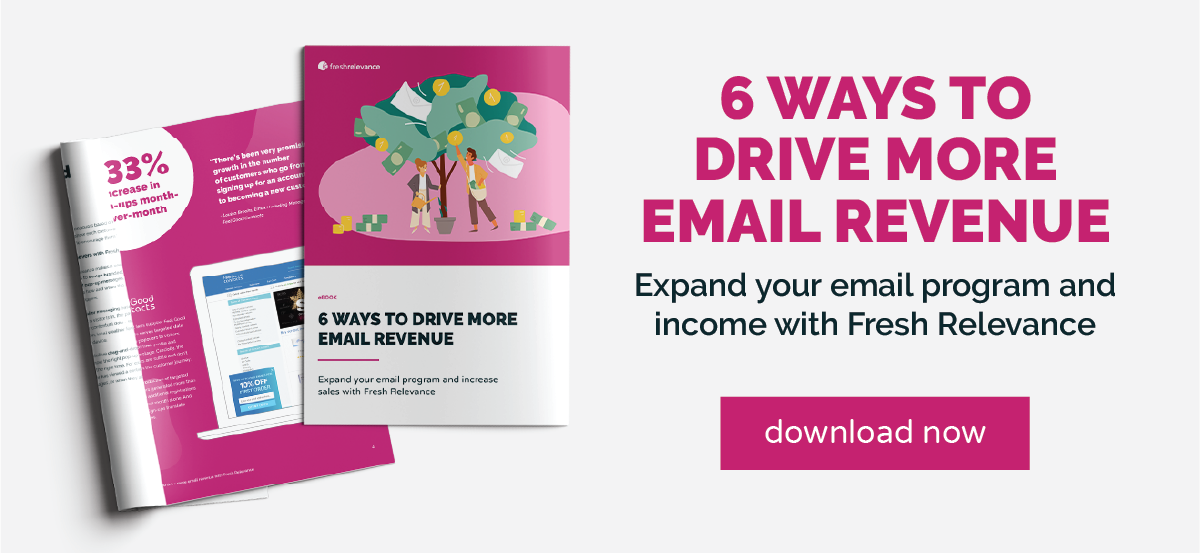As an email marketer, you’re probably always on the lookout for ways to make your marketing emails resonate with consumers. So let’s start the new year with a breakdown of three email innovations consumers want to see, based on the results from Email Monday and Zettasphere’s Email Addiction Research Report.
Innovation #1: Over 1 in 3 respondents (38%) want to see product ratings for products featured in the email
Innovation #2: Over 1 in 3 respondents (35%) want to see products and offers featured based on items they purchased
Innovation #3: 31% of respondents want to receive emails with offers depending on their locations
It’s clear that consumers are looking for relevant, helpful and timely information and email marketers who can deliver this will be the ones to succeed in 2021 and beyond.
Let’s look at how to implement these tactics into your email marketing.
1. Product ratings
Adding product ratings to your marketing emails helps build trust with your shoppers and ease purchase anxiety, boosting click throughs and conversions in the process. In fact, product ratings are top considerations in the purchase process, with over half of consumers looking for star ratings when making a decision. So if you’re not already including this essential social proof tactic in your email marketing, you’re missing a trick.
Buyagift boosts the conversion rate of their automated discount emails by showing ratings alongside each experience and product promoted. Since implementing product ratings and other high converting social proof tactics to their automated emails, Buyagift has seen a 13% increase in sales.
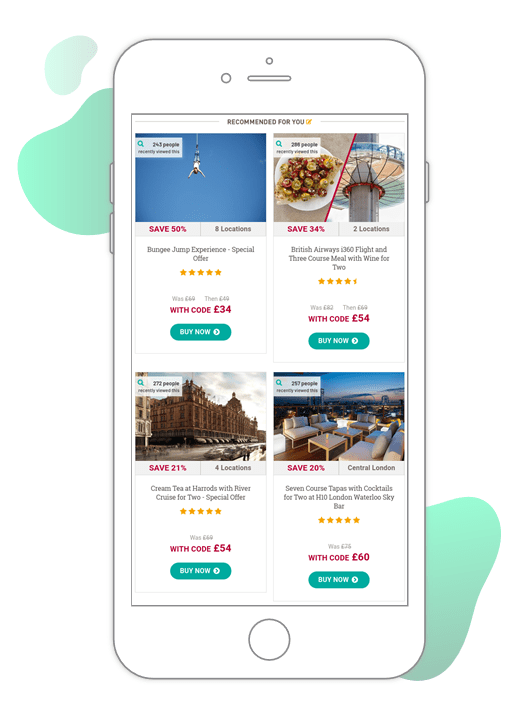
Source: Buyagift email
Top tip: When using ratings alongside product recommendations, filter those recommendations by a minimum star threshold to make sure you showcase your top performers.
Beyond BAU and automated emails, product ratings should also be added to cart and browse abandonment emails, where social proof could be the final nudge a customer needs to make a purchase.
By including product ratings in their cart and browse abandonment emails, Viovet has seen a 19% increase in click through rate.
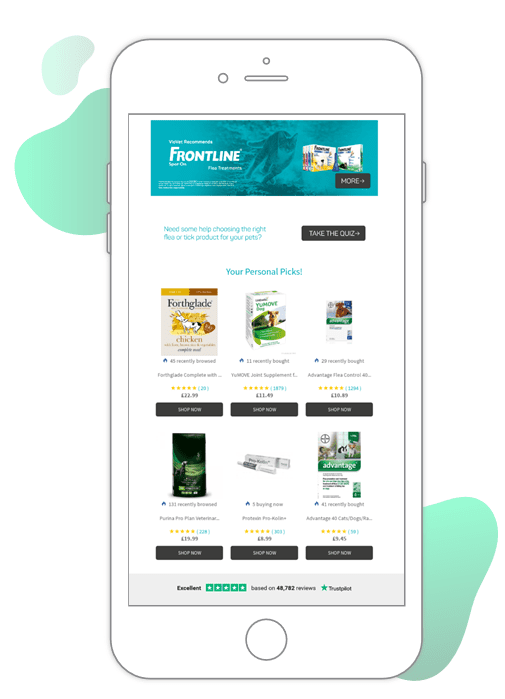
Source: Viovet email
2. Product recommendations
Sales clerks have been giving their customers product recommendations since retail began. And for good reason. Product recommendations work. They help customers make the right purchase for them, which boosts conversions and increases loyalty. In fact, one eCommerce brand boosted their sales by 24% by including personalized product recommendations in their email newsletters.
With many different types of product recommendations to choose from, it’s worth finding the solution that resonates most with your audience through A/B testing.
Kleertjes.com sends their shoppers branded newsletters, whereby any customer who buys a certain brand will receive an email with recommendations as soon as that brand’s new collection is released. This enables them to inspire their customers with products that are most likely to appeal to them based on past purchase and browse data.
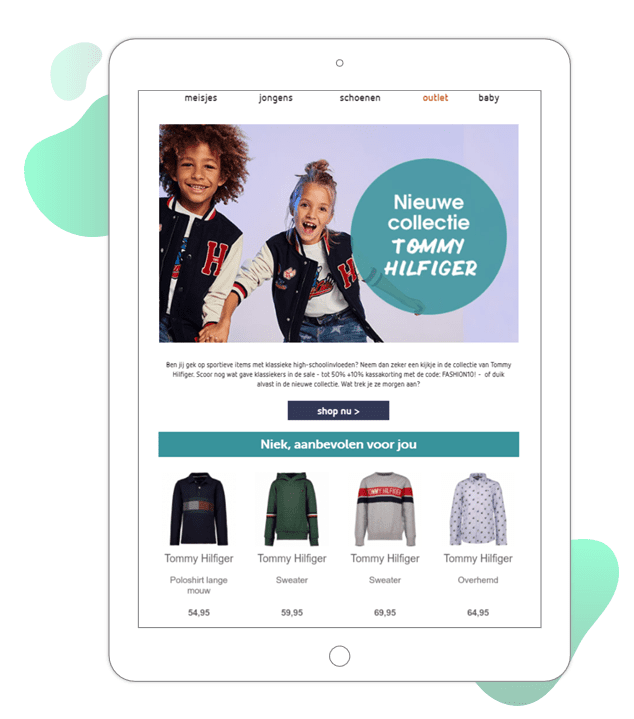
Source: Kleertjes.com email
Product recommendations can also be a welcome addition to cart and browse abandonment emails, offering the shopper more options and helping them find that perfect product. You can show your shoppers similar alternatives to make their purchase decision easier, or take the opportunity to cross-sell and up-sell by inspiring shoppers with items that complement the one they have browsed.
FFX uses product recommendations in their cart and browse abandonment emails, displaying related best selling products underneath the item the shopper has carted or browsed. This tactic has worked for FFX, as these emails achieve an impressive click to open rate of 45%.
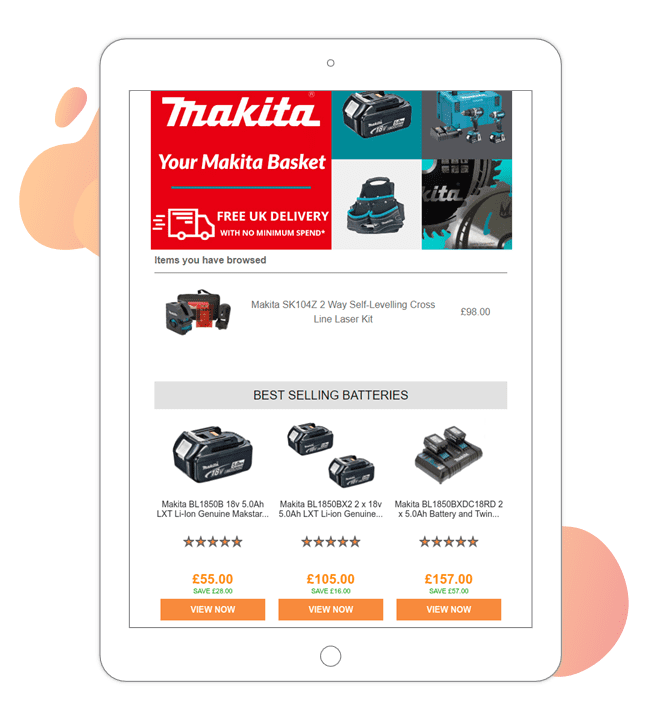
Source: FFX email
3. Geotargeting
The shopper’s physical location has a big influence on their interests and needs when engaging with marketing emails. By using geotargeting tactics you can treat customers differently based on where they’re located, ensuring that they see offers most relevant to their current context.
Halfords personalizes their email newsletters based on the weather in the shopper’s location. In this example of a rainy day email, the banner displays a rain-splattered car window with relevant text and the rest of the email promotes rain-specific products such as wiper blades. This email is guaranteed to be more helpful to shoppers than an email promoting air conditioning products, for example.
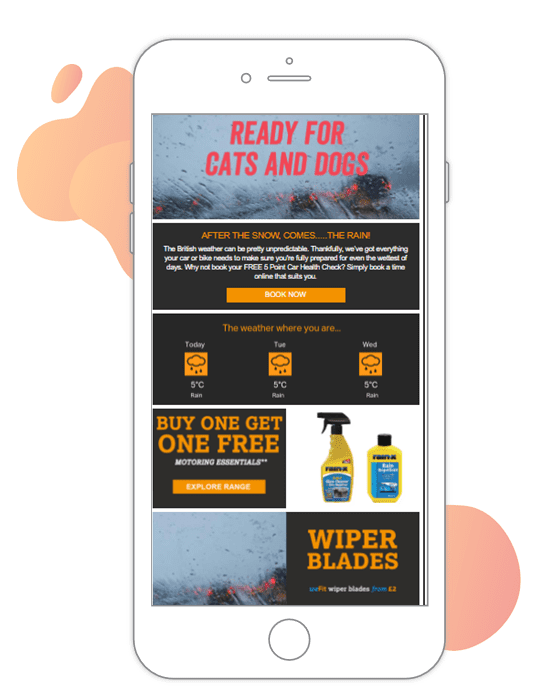
Source: Halfords email
Final thoughts
The people have spoken, and they want to see product ratings, relevant recommendations, and location-specific content in the emails they receive. Use the advice and examples above to ensure your marketing emails meet this criteria and boost your email performance in 2021 and beyond.
With the right strategy and technology in place, it’s never been easier to delight customers and drive revenue through marketing emails.
Read our guide to driving more email revenue to discover how to expand your email program and increase sales with Fresh Relevance.
Disclaimer
This blog post is for informational purposes only. Fresh Relevance is not claiming to provide its services to the companies and brand owners referred to in the blog post.



